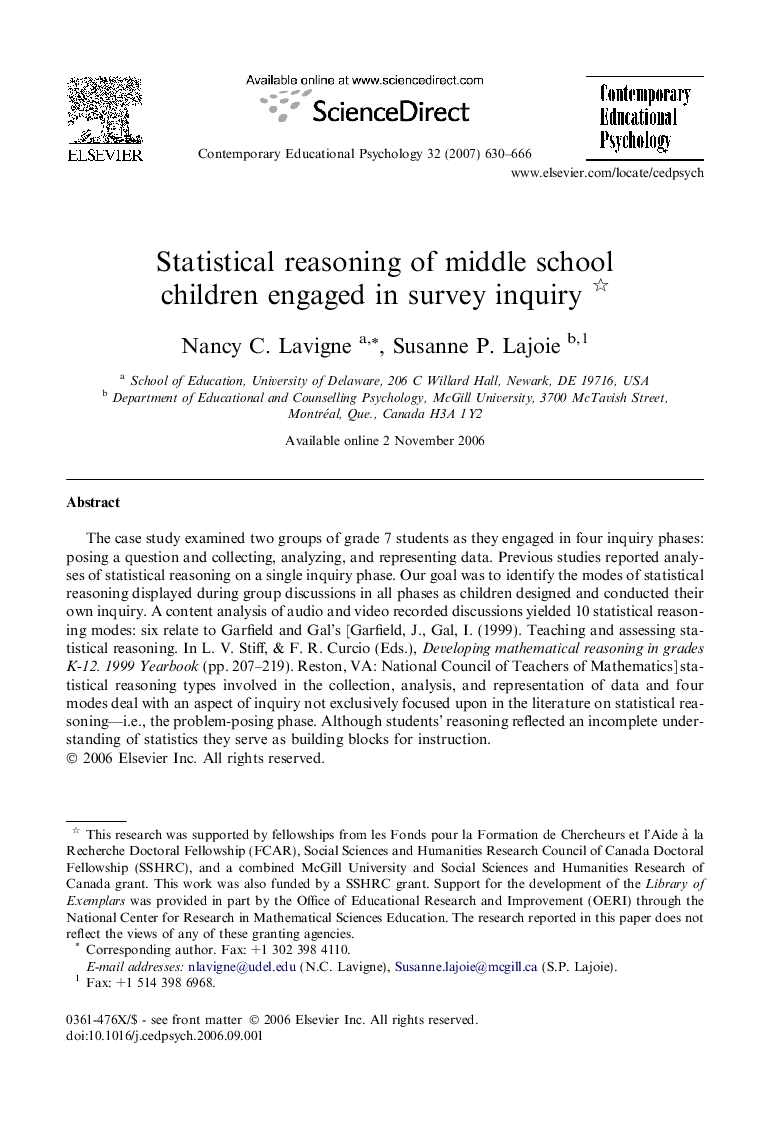| Article ID | Journal | Published Year | Pages | File Type |
|---|---|---|---|---|
| 352805 | Contemporary Educational Psychology | 2007 | 37 Pages |
The case study examined two groups of grade 7 students as they engaged in four inquiry phases: posing a question and collecting, analyzing, and representing data. Previous studies reported analyses of statistical reasoning on a single inquiry phase. Our goal was to identify the modes of statistical reasoning displayed during group discussions in all phases as children designed and conducted their own inquiry. A content analysis of audio and video recorded discussions yielded 10 statistical reasoning modes: six relate to Garfield and Gal’s [Garfield, J., Gal, I. (1999). Teaching and assessing statistical reasoning. In L. V. Stiff, & F. R. Curcio (Eds.), Developing mathematical reasoning in grades K-12. 1999 Yearbook (pp. 207–219). Reston, VA: National Council of Teachers of Mathematics] statistical reasoning types involved in the collection, analysis, and representation of data and four modes deal with an aspect of inquiry not exclusively focused upon in the literature on statistical reasoning—i.e., the problem-posing phase. Although students’ reasoning reflected an incomplete understanding of statistics they serve as building blocks for instruction.
